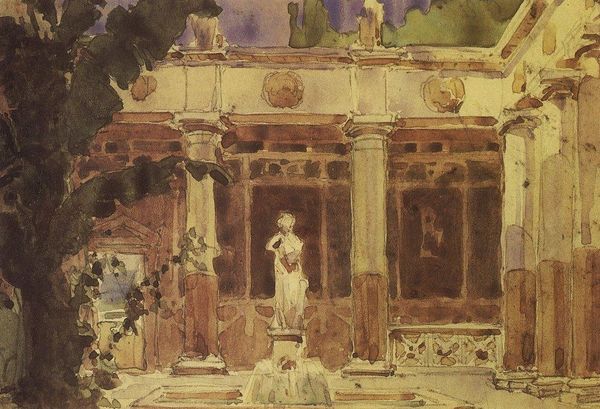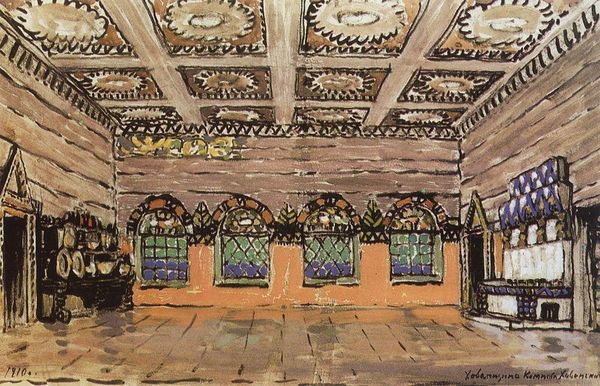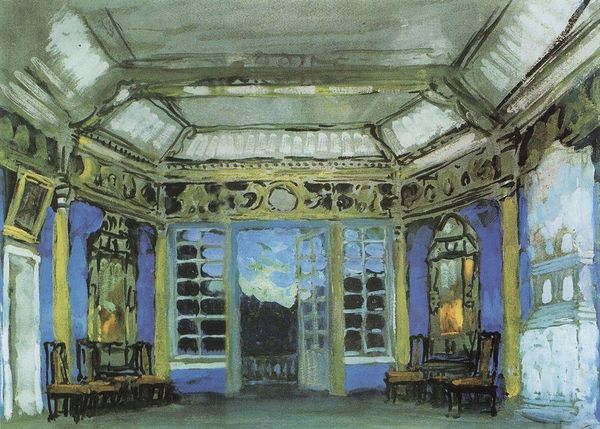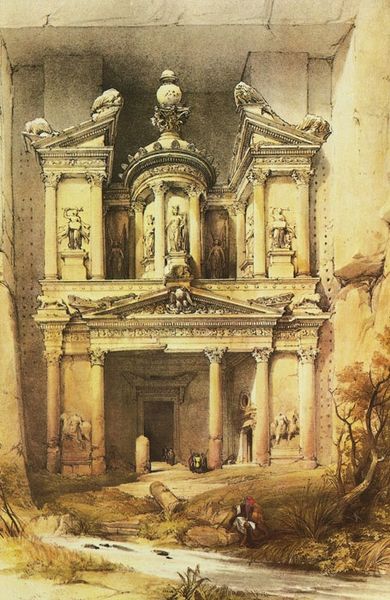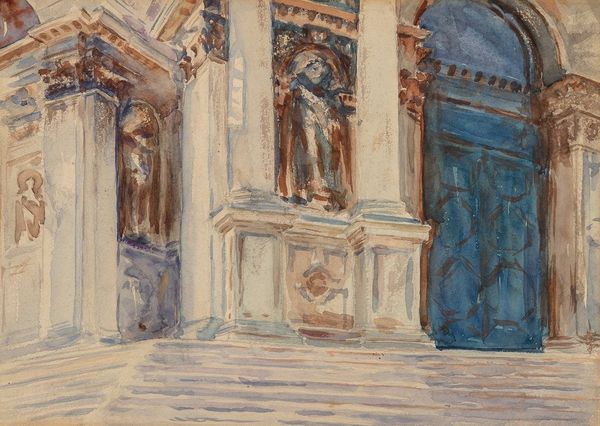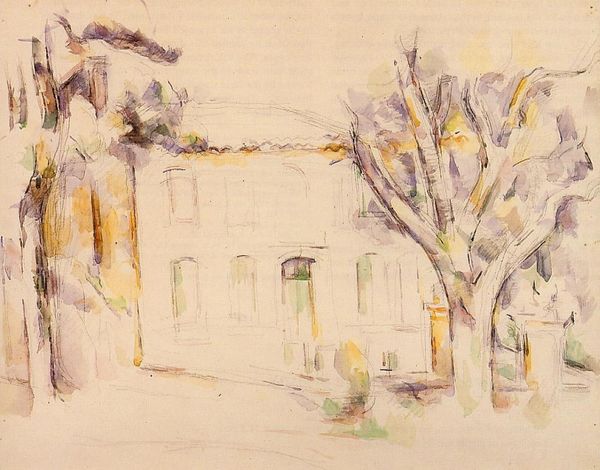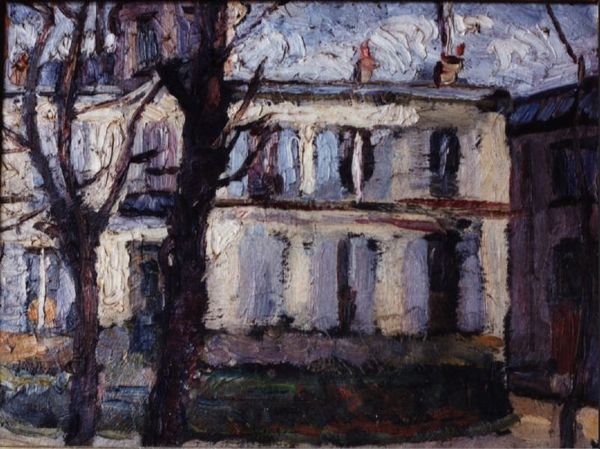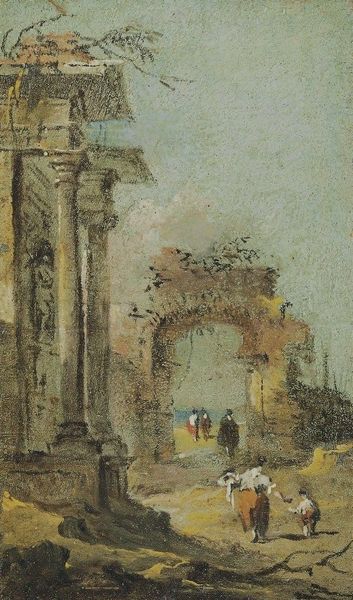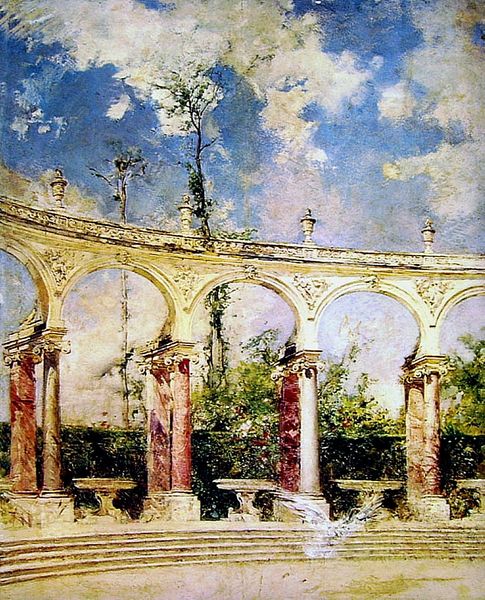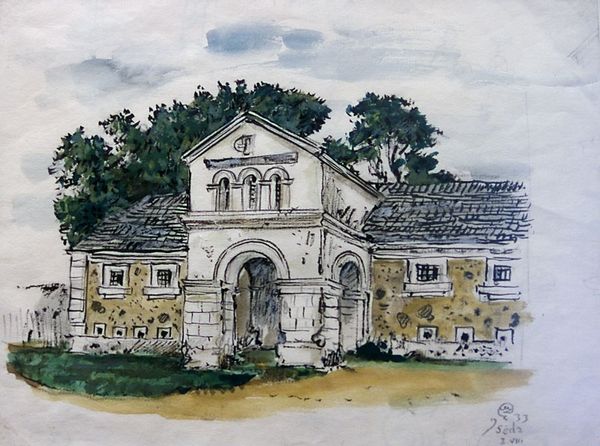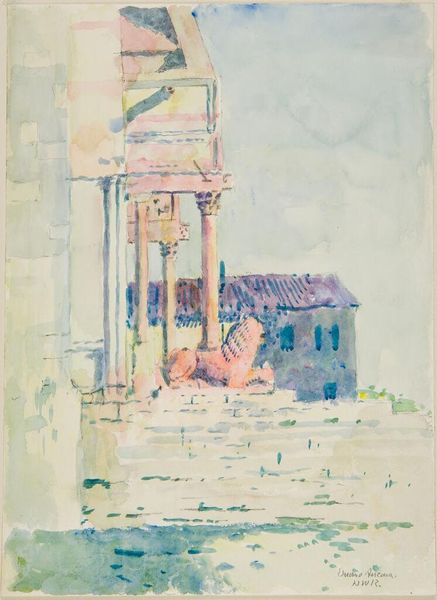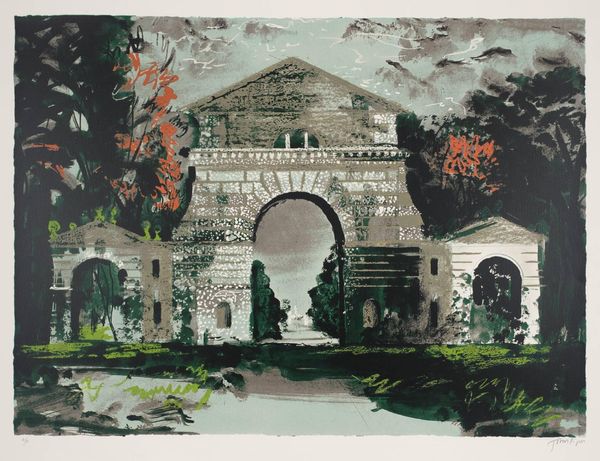
The Larin`s Garden. Sketch of set for P. Tchaikovsky`s opera 1908
0:00
0:00
Copyright: Public domain
Editor: Here we have "The Larin's Garden. Sketch of set for P. Tchaikovsky's opera," an oil-on-canvas piece painted in 1908 by Konstantin Alexeevich Korovin. The colours feel quite muted, and it strikes me as a very traditional garden scene. How would you interpret this work? Curator: Well, it's interesting to consider this piece as a stage set design. Korovin was deeply involved in theatrical design. Does knowing it was a set sketch change how you see it, considering how Russian opera staged national identity? Editor: It does, actually. The building seems more staged, more deliberately constructed. But how does a stage design inform identity? Curator: In this period, the visual culture of theatre often reinforced ideas about Russian heritage. The specific architecture chosen, even in sketch form, conveys certain cultural associations. How do the architectural elements strike you? Do they evoke a specific time? Editor: I suppose the columns and symmetry hint at a sort of idealized Russian past, maybe a noble estate? I can see that aligning with the opera's themes. Curator: Exactly. Korovin is not just creating a backdrop, but contributing to a broader cultural conversation. And even the impressionistic style, breaking from academic painting, plays a role in shaping the perceived authenticity. How do you mean, it suggests the 'real' Russia is not perfectly, academically representable? Editor: That makes sense. The sketch feels less like a literal representation and more like a feeling of Russia. I hadn't considered the stylistic choices as also reinforcing a cultural idea. Curator: Precisely! So, next time, when you're viewing any artwork, remember to always look for context and understand its role in the society in which it was created and in shaping identity. Editor: Definitely! This gives me so much to think about in terms of the choices artists make to communicate cultural values, even when they're seemingly "just" painting scenery.
Comments
No comments
Be the first to comment and join the conversation on the ultimate creative platform.
